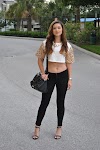Coming Home Crazy: an alphabet of China essays, Bill Holm
Travel memoir, 259 pages. A collection of essays by a non-Chinese speaking Minnesotan Icelander living and teaching in Xi-an for a year. I like his writing. I like his barreling-forward, embracing, optimistic feistiness.
Amethyst Road, Louise Spiegler
YA fiction, alternate realty, inspired by Rom culture, 336 pages. An intelligent, courageous and moral young woman who works to save her young niece, while finding her place among her own people and in the world at large. It’s a great story—appealing characters, gritty hardships and believable courage - inspiriting and thought-provoking.
Iron and Silk, Mark Salzman
Travel memoir, 211 pages. Salzman didn’t go to China wanting to “save” or “lift” the Chinese—he didn’t particularly want to go to modern China—which he saw as a “huge penal colony.” But he needed a job for a year. On the other hand, he’s a longtime martial arts practitioner and loved and studied classical Chinese literature at Yale. He’s something of a clown, shorter than most Chinese, and his unique preparation meant he went to China more as a pupil than a teacher. As a result, his experiences are warmer, more reciprocal, most human.
Room to Fly: A Transcultural Memoir, Padma Hejmadi
Autobiography of a childhood in southern India within a culture with a non-written language, 202 pages. Beautiful writing. I especially like the haunting story of her aunt and the discussion of language and music.
Cold Mountain, Charles Frazier
Novel, 356 pages. A wounded Dixie soldier’s odyssey home to his true love. A sheltered belle’s awaking to self-reliance. Searching for paradise, a lost home, that mystical mountain. Love, courage, and exquisite writing.
Harry Potter and the Deathly Hallows, J.K. Rowling
YA fantasy novel, 7th and final of the series, 759 pages. Okay, she hooked me. The seven books of this publishing phenomenon are not really a series after all, but one long book that must be read in its entirety. The final book is tightly plotted and masterful, majestic even, in its arrival—though that climax, along with its high moral purpose, needs the long building-up through all the other entertaining books to get us there, eager to find out what finally happens and caring immensely about many different and very human characters.
Sir Walter Ralegh and the Quest for El Dorado, Marc Aronson
Historical narrative for mid-teens on up, 222 pages. We read it aloud—vigorous sentences, meaty stories, intelligent and well-balanced history of the first colonization of America through the life of Ralegh and his political and personal triumphs and tragedies. I so admire this book and look forward to his others—John Winthrop, Oliver Cromwell and the Land of Promise and The Real Revolution: A Global History of American Independence.
Gardening under Cover: a Northwest guide to solar greenhouses, cold frames, and cloches, William Head.
Northwest, cold-weather gardening, 135 pages. Great guide to building cold frames and tunnel cloches—clear step-by-step directions, useful diagrams, variety of methods.
Winter Gardening for the Maritime Northwest: cool-season crops for the year-round gardener, Binda Colebrook.
Northwest, cold-weather gardening, 163 pages. I love how nonfiction books tell it all in their titles. Book by British Columbian gardener—she’s sensible and down to earth and very encouraging, with useful lists of vegetables and culture requirements.
Gaia’s Garden: a guide to home scale permaculture, Toby Hemenway.
Northwest permaculture, 222 pages. Organic, sustainable forest gardens) for the temperate north by an Oregon author. Clearly written with useful diagrams and pictures, approachable style.
Oaxaca Journal, Oliver Sacks.
Travel journal, 159 pages. Celebrated psychologist (author of Awakenings and The Man Who Mistook His Wife for a Hat) travels in Mexico with some fellow fern-enthusiasts. Delightful to be in the presence of this curious and gentle intelligence.
The Nine Tailors: changes rung on an old theme in two short touches and two full peals, Dorothy Sayers.
Mystery set in East Anglia between the wars, 331 pages. A masterpiece of evocative spareness with real depth of feeling. Lord Peter Wimsey takes a back seat to the East Anglian countryside and its wide-ranging characters—each standing out vividly in the clear, watery light.
The World to Come, Dara Horn.
Novel, 314 pages. A brother and sister, twins, the progeny of Jews who suffered in the pogroms of Eastern Europe. A painting by Chagall. Finding true love. Finding courage. And the afterlife (maybe).
Real Food: What to Eat and Why, Nina Planck.
Nutrition, 343 pages. A popularization of the research by Weston Price (Nutrition and Physical Degeneration) and Sally Fallon and Mary Enig (Nourishing Traditions: the cookbook that challenges politically correct nutrition and the diet dictocrats), as well as a personal account of growing up eating homegrown vegetables, home-raised milk and meat and eggs and then becoming a vegetarian with unexpectedly unpleasant results. In a nutshell: avoid industrial food. Eat real (as close to homegrown as possible) veg - in all the colors of the rainbow - and fruit; whole grains; olive oil, coconut oil - and for cooking: organic butter, lard, duck and beef fat; whole organic milk and eggs, organic meat, fish, dark chocolate. The research looks impressive and the recommendations seem sensible.




0 Yorumlar